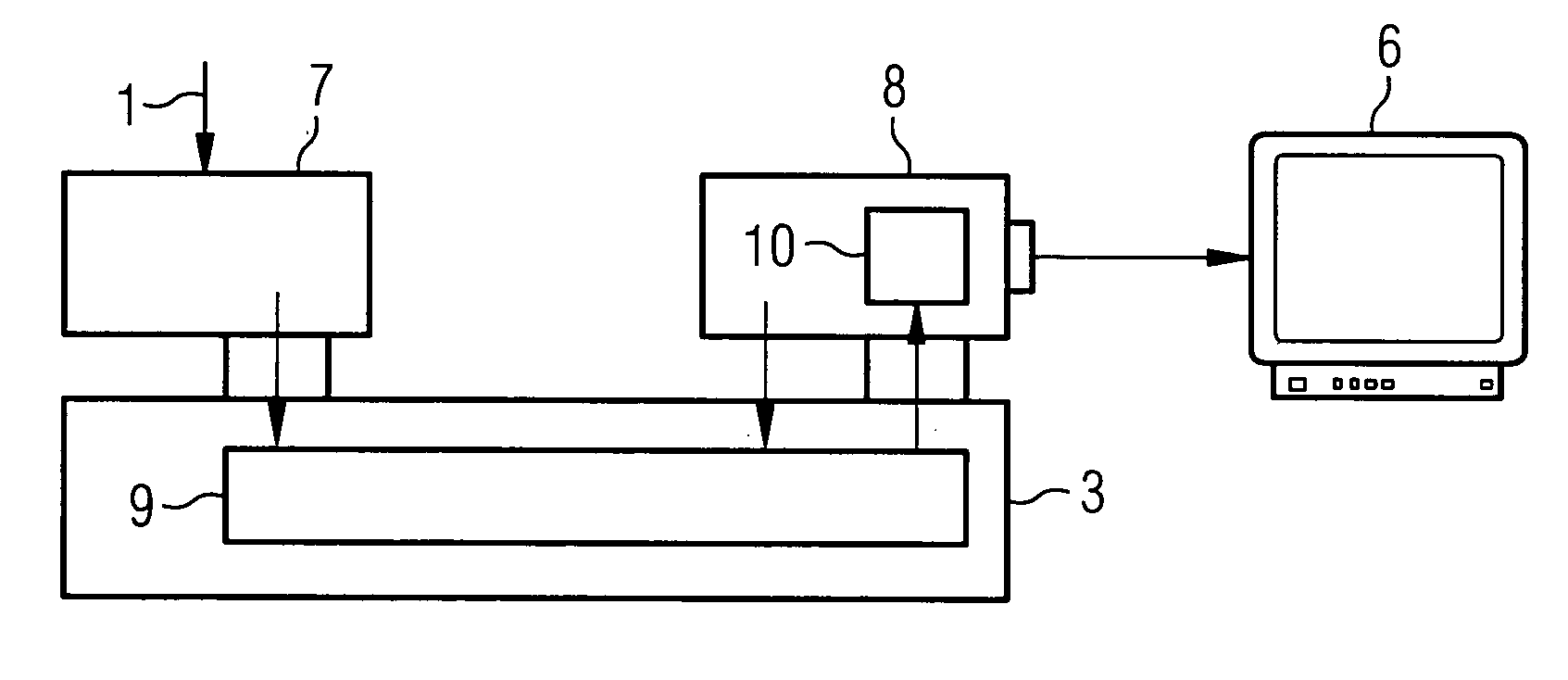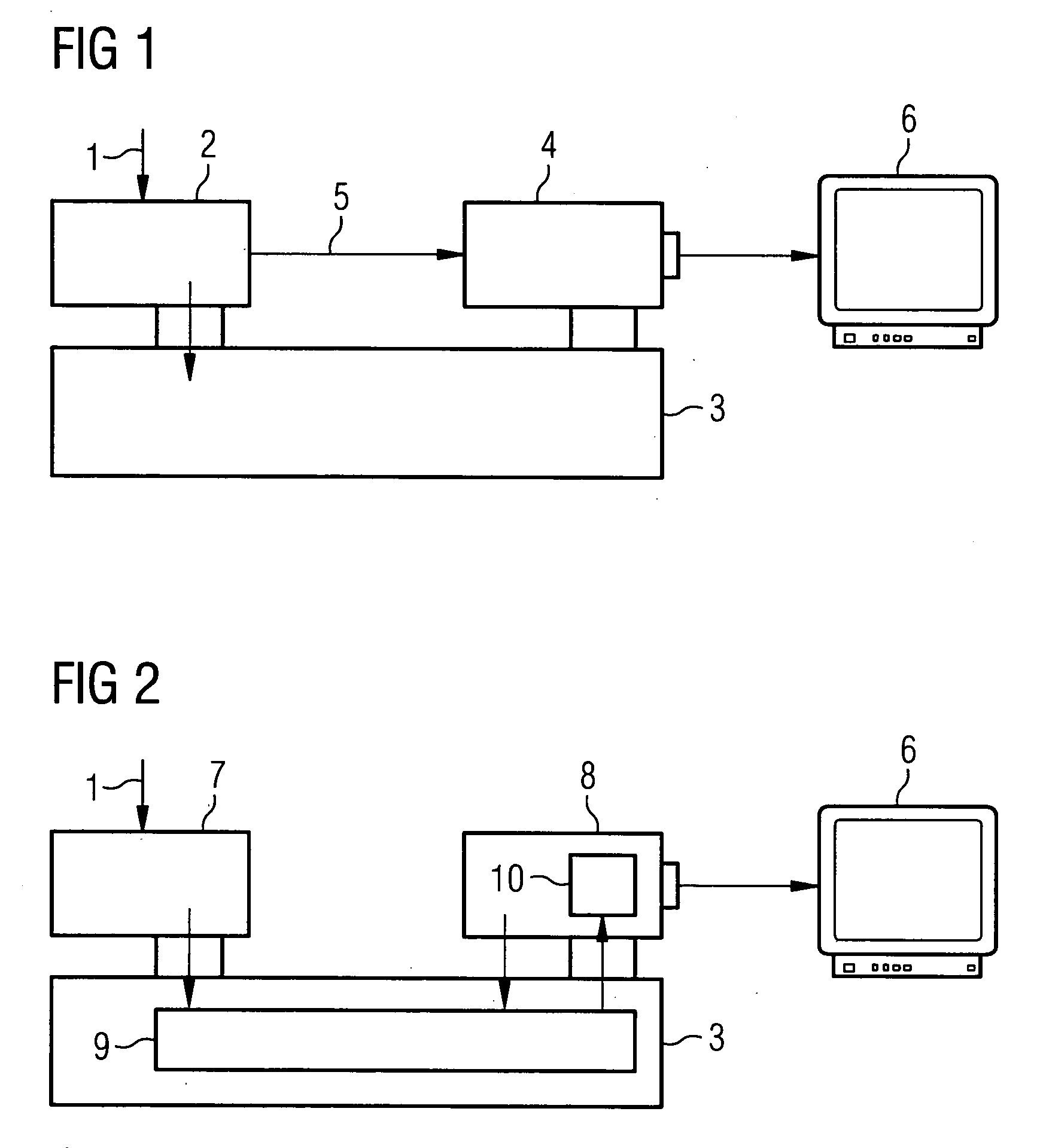Method for the rapid image processing of medical images
- Summary
- Abstract
- Description
- Claims
- Application Information
AI Technical Summary
Benefits of technology
Problems solved by technology
Method used
Image
Examples
Embodiment Construction
[0019]FIG. 1 shows an example for the ratio with the image processing of medical images which are hitherto present with the x-ray imaging. The raw data obtained by the x-ray detector 1 is directly fed to a digital signal processor 2 (DSP) which carries out the complete image processing. The digital signal processor 2 is additionally provided at a conventional PC3, by means of which the command input is effected. The image data processed by the digital signal processor 2 (DSP) is fed to a special graphics card 4 by means of a direct link 5, by means of which the processed images are displayed on a monitor 6. The master processor of the PC 3 does not take part in the image processing, but can however receive the processed image data from the digital signal processor 2, in order to store these for instance for a later display or further processing.
[0020] Contrastingly, FIG. 2 shows the conditions present in the implementation of the present method. In this example, the raw data is acq...
PUM
 Login to View More
Login to View More Abstract
Description
Claims
Application Information
 Login to View More
Login to View More - R&D
- Intellectual Property
- Life Sciences
- Materials
- Tech Scout
- Unparalleled Data Quality
- Higher Quality Content
- 60% Fewer Hallucinations
Browse by: Latest US Patents, China's latest patents, Technical Efficacy Thesaurus, Application Domain, Technology Topic, Popular Technical Reports.
© 2025 PatSnap. All rights reserved.Legal|Privacy policy|Modern Slavery Act Transparency Statement|Sitemap|About US| Contact US: help@patsnap.com


